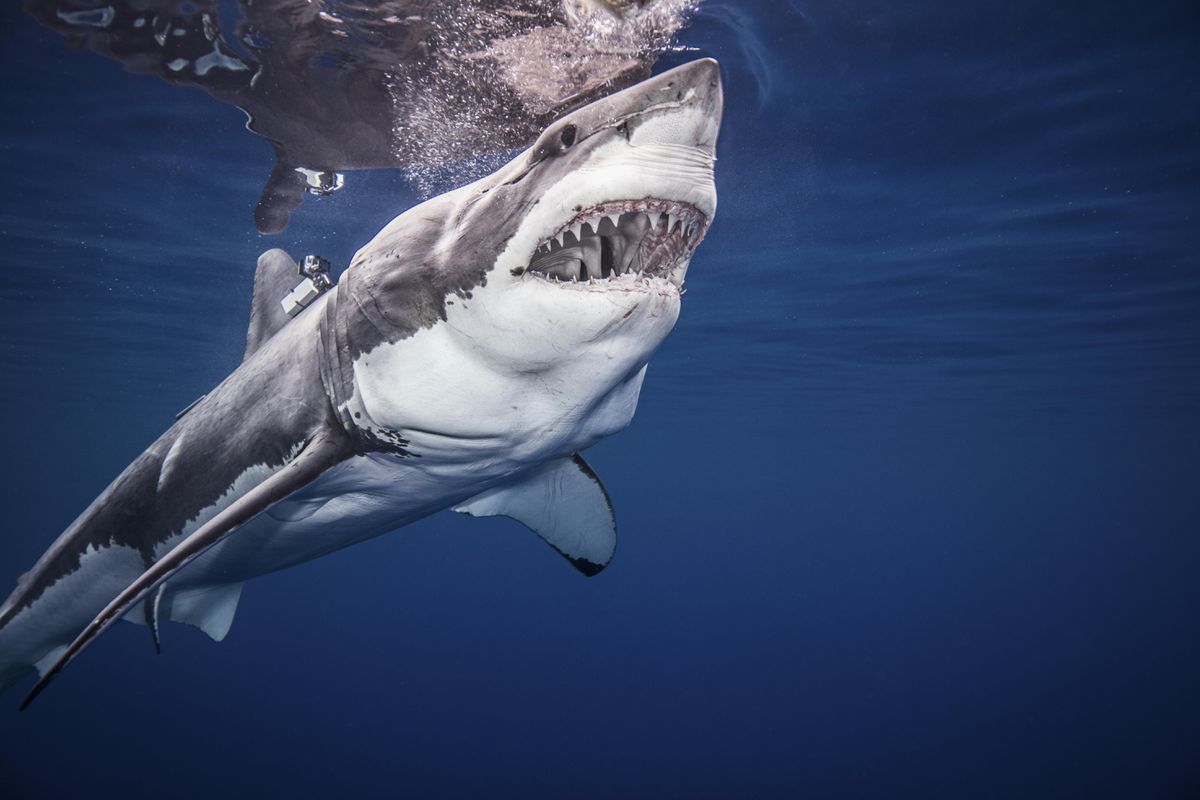One thing you should know to properly conserve an animal species is their population size: how many are there? How many are breeding? How many are we losing? Yet, monitoring this abundance is tough when the species in question lives in the ocean and their home range stretches thousands of miles. Such is the case for the white shark (Carcharodon carcharias), a highly mobile predator that has seen population declines worldwide.

Monitoring population abundance is tough when the species in question lives in the ocean and their … [+]
getty
Despite substantial investment into this field of research, many mobile marine species remain data‐poor… which can be a hassle when trying to evaluate whether conservation management actions are working and the modeling of future solutions. Just ask UQ Ph.D. candidate Dani Davenport, who said “it is difficult to determine if protections applied to the white shark in Australia have been working, as monitoring populations of animals underwater is challenging, and particularly so for the white shark, which is difficult to find, catch and handle.” So, it should come as no surprise that it was tough to get a snapshot of recent reproduction efforts in the east Australian–New Zealand population of white sharks.
The joint study – which involved The University of Queensland, NSW Department of Primary Industries, and Stellenbosch University in South Africa – focused on east Australia–New Zealand population (EAP) of white sharks due to their patterns of coastal residency and site fidelity. Their movements within this region mean they were a genetically distinct population from other identified populations (e.g. North‐Pacific, South‐West Australia, Atlantic, South Africa, and the Mediterranean). The EAP has unfortunately experienced over a 90% decline during the 20th century due to varied human activities (such as targeted fishing and mortalities associated with bather protection programs), and the team is hopeful that the population can bounce back thanks to protections through international conventions and jurisdictional legislation.
“Previous efforts to detect population recovery using historical catch data and genetic close‐kin mark-recapture found no significant evidence of population growth or recovery in the EAP,” the authors state in the new study. “Updated bather protection programs along parts of east coast Australia […] offer an opportunity for nonlethal tissue sampling and to determine the usefulness of this genetic monitoring method in the EAP.”

The east Australia–New Zealand population (EAP) of great white sharks has unfortunately experienced … [+]
getty
Davenport agrees, stating that the ‘Shark Management Alert in Real-Time’ (SMART) drumlines “provided a valuable source of material for genomic analyses from sharks caught as part of the program.” Established by NSW DPI as part of the NSW Government’s ‘Shark Management Strategy,’ these SMART drumlines are designed to be non-lethal and to send an alert when a shark has been captured on the line. The sharks caught were measured, sampled for DNA, and then tagged with a tracking device before being released back, alive, to their ocean environment. Back in the lab, the team used genomics to estimate the yearly number of “effective breeders” in this white shark population. “Effective breeders are like the ‘genetic vault’ that carry the genes of the population and pass them down to the next generation,” said Davenport. In other words, these were individuals that successfully had offspring in one reproductive cycle.
The team was able to show the size of the effective breeding population over four consecutive years (2010 to 2013) for white sharks in an east Australian–New Zealand population, and that approximately 206 to 252 sharks breed on Australia’s east coast each year. “While this study showed stable numbers of effective breeders over the years 2010 to 2013, the white shark has a slow life history and is long-lived. For example, female white sharks do not mature until, on average, they are 16 feet (5 meters) in length or 16-years of age,” Davenport said. While these present results are promising, the team suggests future monitoring should continue through the SMART drumlines since it is a way to get nonlethal tissue samples. “Any possible recovery of the population after the declines of the 20th century may not be detected unless we continue monitoring.”
This article is auto-generated by Algorithm Source: www.forbes.com


